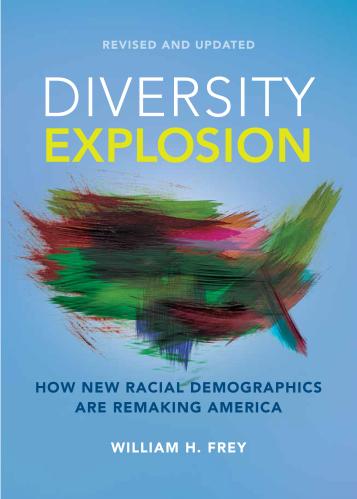The “children’s crusade” against gun violence, stemming from the Florida shootings at Marjory Stoneman Douglas High School on February 14 appears to be more than a transitory movement. Already sweeping cities across the country pointing toward a March 24 march in Washington, this groundswell of student support–reminiscent of protests against the Vietnam War in the 1960s–could hold long-term consequences for national politics. Especially if the president and the Republican-led Congress continue to hold fast to their NRA-backed stance against meaningful gun control, this post-millennial movement could solidify already strong youthful support for the Democratic Party.
Such support among young people was evident in the past three presidential elections when millennial generation young adults showed the highest Democratic minus Republican voting margins, among all groups, for Democratic candidates (see Figure 1). As CNN’s senior political analyst Ronald Brownstein describes in his analysis today of the Parkland shooting and the post-millennial generation’s impending political influence, by 2028, post-millennials, now under age 20, will comprise a nontrivial portion of the voting age population. However, prior to that, their clout as activists could be felt toward energizing voting turnout and choices in the upcoming congressional and presidential elections. This would draw from the strength of this sustained movement, their savviness with social media, and relationships with their older voting age associates and parents who themselves are relatively young adult millennials and Gen Xers.

One aspect of this upcoming voting-age generation is their unique racial diversity. As indicated in the report, The millennial generation: A demographic bridge to America’s diverse future, nearly half of post-millennials are part of racial minority groups that have favored Democratic candidates in the last three presidential elections (see Figure 2). In fact, though whites as a group voted Republican in each election, young-adult whites voted less strongly Republican than their elders in the 2016 election of Donald Trump and the 2012 election of Barack Obama after having voted Democratic (for Obama) in 2008.

The political leanings of post-millennials themselves favor the Democrats. A 2017 survey undertaken by PRRI indicated that 57 percent of persons age 15-24 (including older post-millennials and the youngest millennials) have favorable views of the Democratic Party compared with 31 percent of Republicans. Yet, among minorities of these young people, favorable views of the Democratic Party are much higher: 84 percent for blacks, 76 percent for Asians and 64 percent for Hispanics. White young people are more evenly divided with 46 percent favoring the Democratic Party and 43 percent favoring the Republican Party.
This strength of Democratic support among minorities is significant in light of the way minority percentages of the post-millennial population vary across states (see Map 1). Minorities comprise more than half of post-millennials living in 13 states plus Washington D.C.; and more than 40 percent in an additional 11 states. Among these heavily minority post-millennial states are the presidential election swing states of Nevada, Arizona, Florida, Georgia, North Carolina, Virginia and the near swing state of Texas. Clearly, strong activism among post-millennials can be important in both near and long-term elections.

While most post-millennials are not yet of voting age, some indication of how they might vote can be seen from a large survey of voting preferences among grade K-12 schoolchildren by Scholastic News taken prior to the 2016 election. The results show a popular vote 52 percent to 35 percent win for the Democratic candidate Hillary Clinton over Republican candidate Donald Trump as well as a resounding 436-99 win in the mock Electoral College election as shown in Map 2. Clinton won each of the South and West swing states mentioned above in addition to northern swing states, Pennsylvania, Ohio, Michigan, and Wisconsin.

Of course, this a crude indication, at best, of the long-term political preference of these elementary and secondary student post-millennials. But it says something about their predispositions as many of them are now involved with great fervor in rallies and marches around the country about an issue that they see as impacting them directly. These young people will be paying close attention in the coming weeks and months to the actions or inactions taken by their representatives in the U.S. Congress and by the president himself. This time feels different from earlier movements about gun violence, and feels unlike earlier student movements in general. As of now, Democrats have the opportunity to retain the support of this demographically significant generation for future elections. But both parties would be well advised to take their concerns seriously.
The Brookings Institution is committed to quality, independence, and impact.
We are supported by a diverse array of funders. In line with our values and policies, each Brookings publication represents the sole views of its author(s).







Commentary
The post-millennial movement against gun violence could solidify long-term Democratic support
February 27, 2018